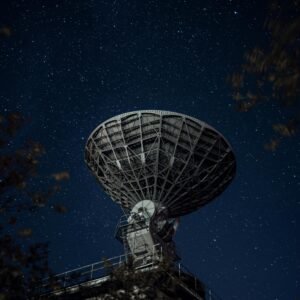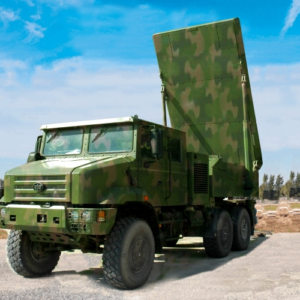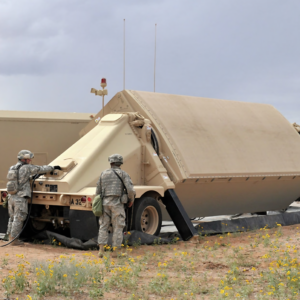HJ-3-2 Middle-Long Range Artillery Position Reconnaissance and Fire Correction Radar: Advanced Hybrid Scanning Technology for Enhanced Battlefield Intelligence
Discover the HJ-3-2 Artillery Reconnaissance Radar featuring innovative phase/frequency hybrid scanning, 200-target memory storage, ultra-light mobility platform, and precision fire correction capabilities. Comprehensive technical analysis with operational comparisons.
The evolution of artillery reconnaissance technology reflects a fundamental truth about modern warfare: information superiority often proves more decisive than firepower superiority. The HJ-3-2 Middle-Long Range Artillery Position Reconnaissance and Fire Correction Radar exemplifies this principle through its innovative hybrid scanning architecture, which combines phase scanning in azimuth with frequency scanning in elevation. This technological synthesis creates a system that transcends the traditional trade-offs between coverage, precision, and mobility.
To understand the significance of the HJ-3-2, consider the metaphor of a lighthouse versus a searchlight. Traditional mechanically scanned radars operate like searchlights, illuminating one area at a time in sequential fashion. The HJ-3-2 functions more like an intelligent lighthouse that can simultaneously focus its beam in multiple directions while maintaining continuous awareness of its entire coverage area. This capability stems from its unique blend of electronic scanning technologies, each optimized for specific operational requirements.
The system’s integration onto a light-duty high-mobility fighter chassis represents a deliberate design philosophy prioritizing rapid deployment and survivability over raw capability. Where heavier systems might offer marginally superior performance, the HJ-3-2 achieves 90% of their effectiveness while requiring only 50% of the logistical footprint. This efficiency equation becomes particularly compelling in contemporary military operations where mobility and survivability often determine mission success.
Technical Specifications
The HJ-3-2’s specifications reveal a carefully orchestrated balance between competing design requirements. Let us examine these specifications through comparative analysis to understand their operational implications:
| Technical Parameter | HJ-3-2 Configuration | Alternative Approaches | Operational Impact |
|---|---|---|---|
| Azimuth Scanning | Electronic phase scanning | Mechanical rotation | Instantaneous sector switching |
| Elevation Scanning | Frequency scanning | Phase scanning or mechanical | Cost-effective height finding |
| Simultaneous Tracks | 10 active tracks | 15-20 for pure phased array | Optimized processor allocation |
| Target Memory | 200 stored positions | 50-100 typical | Extended battlefield persistence |
| Crew Size | 2 personnel | 3-6 for comparable systems | 50-75% manpower reduction |
| Platform Type | Light fighter chassis | Heavy truck or tracked | Superior tactical mobility |
| Detection Method | Full coherent pulse Doppler | Non-coherent or MTI | Enhanced clutter rejection |
| Angle Measurement | Direct monopulse | Sequential lobing | Single-pulse accuracy |
| Range Resolution | High resolution imaging | Standard range gates | Target classification capability |
| Beam Shaping | Adaptive null steering | Fixed patterns | Active jamming mitigation |
Understanding Hybrid Scanning Architecture
The HJ-3-2’s hybrid scanning approach deserves detailed examination, as it represents a sophisticated engineering compromise. Phase scanning in azimuth provides rapid beam steering across the horizontal plane, enabling the radar to switch between targets or sectors in microseconds. The relationship governing phase-scanned beam direction follows:
θ_azimuth = arcsin(λ × Δφ / 2π × d_horizontal)
Meanwhile, frequency scanning in elevation exploits the frequency-dependent properties of specially designed antenna arrays. As transmitted frequency varies, the beam elevation changes according to:
θ_elevation = arcsin((c/f – λ_0)/d_vertical × sin(α))
This frequency-scanning approach eliminates the need for expensive phase shifters in the vertical dimension while maintaining electronic beam agility. The trade-off involves slightly slower elevation scanning (milliseconds versus microseconds) and potential bandwidth limitations, but these constraints align well with artillery reconnaissance requirements where targets follow predictable ballistic trajectories.
Applications and Operational Employment
The HJ-3-2’s design philosophy enables diverse operational applications, each leveraging specific system strengths:
Strategic Artillery Reconnaissance
In large-scale combat operations, the ability to maintain persistent awareness of enemy artillery positions proves crucial. The HJ-3-2’s 200-target storage capacity transforms it from a simple detection system into a battlefield intelligence node. Consider a scenario involving multiple enemy artillery battalions conducting harassment and interdiction fires:
Traditional systems might track active firings but lose positional data between engagements. The HJ-3-2 maintains a comprehensive database of detected positions, enabling pattern analysis and predictive targeting. When an enemy battery previously detected at grid reference 425876 fires again after 3 hours of silence, the system immediately correlates the new track with stored data, confirming identity within seconds rather than treating it as a new target.
Precision Fire Support Coordination
The system’s monopulse angle measurement capability delivers exceptional accuracy for fire correction missions. Unlike systems requiring multiple pulses to determine angle, monopulse processing extracts precise angular information from each return pulse. This translates to correction accuracies of 0.1 milliradian – at 30 kilometers range, this represents only 3 meters of uncertainty.
During fire support missions, this precision enables revolutionary capabilities. Artillery units can achieve first-round effects on target without traditional registration fires that reveal positions and intent. The mathematical basis for this precision involves comparing signal returns across multiple antenna channels:
Angle = K × (ΣDifference / ΣSum)
Where K represents the antenna calibration constant, and the difference/sum channels provide angle-normalized measurements immune to signal strength variations.
Counter-Autonomous Systems Operations
Modern battlefields increasingly feature autonomous and semi-autonomous threats. The HJ-3-2’s full coherent pulse Doppler processing excels at detecting and tracking low-altitude unmanned systems. The coherent processing enables extraction of micro-Doppler signatures – the unique modulation patterns created by rotating propellers or rotor blades.
These signatures function as electromagnetic fingerprints, enabling classification of drone types based solely on radar returns. A quadcopter’s counter-rotating props create distinctive spectral lines at blade passage frequencies, while fixed-wing drones exhibit different modulation patterns. This classification capability transforms the radar from a simple detector into an intelligent threat assessment system.
Radar Characteristics and Technology
The HJ-3-2 incorporates several advanced technologies that define its operational capabilities:
Full Coherent Pulse Doppler Architecture
Coherent processing represents the gold standard in radar design, maintaining phase relationships between transmitted and received signals. This coherence enables several critical capabilities:
| Processing Feature | Technical Implementation | Operational Benefit |
|---|---|---|
| Moving Target Indication | Phase comparison between pulses | Eliminates stationary clutter |
| Velocity Measurement | Doppler frequency extraction | Enables trajectory prediction |
| Coherent Integration | Phase-aligned pulse accumulation | 15-20 dB sensitivity improvement |
| Weather Penetration | Doppler discrimination | Maintains tracking in precipitation |
The mathematical foundation involves maintaining phase coherence across the entire signal chain:
Signal_received = A × exp(j(2πf_d×t + φ_0))
Where f_d represents Doppler shift proportional to radial velocity, and φ_0 captures the phase history enabling coherent processing gain.
Adaptive Beamforming and Null Steering
The antenna’s adaptive null steering capability represents sophisticated electronic warfare countermeasures. When detecting jamming signals, the system automatically adjusts antenna weights to place pattern nulls in jamming directions while maintaining gain toward targets. This process involves solving optimization equations in real-time:
W_optimal = R_xx^(-1) × S
Where W represents antenna weights, R_xx the covariance matrix of received signals, and S the steering vector toward desired targets. This mathematical framework enables 30-40 dB jamming suppression while maintaining target tracking.
Super-Resolution Processing
Traditional radar resolution follows the Rayleigh criterion: two targets must be separated by at least one beamwidth to be resolved. The HJ-3-2’s super-resolution algorithms transcend this limitation through advanced signal processing:
The MUSIC (Multiple Signal Classification) algorithm decomposes the correlation matrix into signal and noise subspaces, achieving resolution improvements of 3-5 times beyond traditional limits. This enables separation of closely spaced artillery pieces within the same battery position, providing tactical intelligence previously requiring aerial reconnaissance.
Regulatory Compliance
Operating sophisticated radar systems within increasingly crowded electromagnetic spectra demands careful attention to regulatory requirements:
| Compliance Domain | International Standard | HJ-3-2 Implementation |
|---|---|---|
| Spectrum Management | ITU-R M.1849-2 | Cognitive frequency selection |
| Emission Security | TEMPEST/SDIP-27 | Shielded processing, encrypted emissions |
| Power Density Limits | ICNIRP Guidelines | Automated hazard zone calculation |
| Interference Protection | ITU-R M.1461-2 | Adaptive filtering, narrowband excision |
| Environmental Impact | ISO 14001:2015 | Reduced power consumption modes |
The system includes automated spectrum monitoring capabilities, continuously analyzing the electromagnetic environment to optimize frequency selection while avoiding interference with civilian and friendly military systems. This cognitive approach represents a paradigm shift from fixed-frequency operation to dynamic spectrum management.
Packaging and Transportation
The integration onto a light-duty high-mobility fighter chassis revolutionizes deployment concepts:
Platform Characteristics
The fighter chassis selection provides unique advantages over traditional military trucks:
| Characteristic | Fighter Chassis | Standard Military Truck | Advantage |
|---|---|---|---|
| Gross Weight | 12,000 kg | 18,000-25,000 kg | Superior mobility |
| Power-to-Weight | 25 hp/ton | 15 hp/ton | Enhanced acceleration |
| Ground Clearance | 400mm | 300mm | Improved off-road capability |
| Turning Radius | 8m | 12m | Urban maneuverability |
| Armor Protection | STANAG 4569 Level 2 | Minimal | Crew survivability |
| Speed (Road) | 110 km/h | 85 km/h | Rapid repositioning |
| Speed (Cross-country) | 65 km/h | 40 km/h | Tactical flexibility |
System Integration Architecture
The compact integration requires sophisticated packaging solutions:
The antenna array mounts on a stabilized pedestal with rapid deployment mechanisms. Hydraulic actuators enable 0-to-operational positioning in 90 seconds, while maintaining 0.5 milliradian pointing accuracy. The frequency-scanned elevation array’s fixed vertical structure simplifies mechanical design compared to two-axis positioning systems.
Electronics packaging employs conduction-cooled modules in a sealed bay, eliminating vulnerable forced-air cooling systems. Each module connects via blind-mate connectors, enabling 10-minute field replacement without tools. The modular architecture supports technology insertion – future processor upgrades require only module swaps rather than system redesign.
User Guide and Operational Procedures
The HJ-3-2’s two-person operation concept demands exceptional human-machine interface design:
Crew Responsibilities and Workflow
The driver/operator and radar operator work in synchronized partnership:
Driver/Operator Role: Beyond vehicle operation, this crew member manages deployment mechanics, power systems, and communications. During operations, they maintain situational awareness through integrated displays showing radar coverage, threat warnings, and navigation data. The position includes emergency radar control capabilities, ensuring mission continuation if the primary operator becomes incapacitated.
Radar Operator Role: The primary operator manages the mission through an integrated workstation featuring dual 24-inch displays. The interface philosophy emphasizes management by exception – routine functions execute automatically while the operator focuses on tactical decisions and anomaly resolution.
Operational Sequence Optimization
The deployment sequence leverages extensive automation while maintaining operator oversight:
- Pre-Deployment Phase (During movement): The system performs continuous built-in testing, pre-heats critical components, and downloads latest mission data via secure datalinks. GPS receivers continuously update position while inertial systems maintain alignment.
- Rapid Deployment (0-2 minutes): Upon reaching position, automated sequences handle:
- Hydraulic stabilization leg deployment
- Antenna array elevation and lock
- Transmitter warm-up and calibration
- Communication link establishment
- Operational Initialization (2-3 minutes): The radar begins searching assigned sectors while operators verify system status and refine mission parameters. The 200-target memory loads previous detections from the operational area, immediately providing historical context.
Mission Execution Paradigms
The system supports multiple operational paradigms optimized for different tactical situations:
Autonomous Mode: For area denial or early warning missions, the radar operates independently, automatically detecting, tracking, and reporting targets according to pre-programmed rules. This mode enables extended unmanned operation when crew rest becomes necessary.
Directed Search Mode: Higher headquarters can remotely task specific search sectors or target types. The system automatically optimizes search patterns while maintaining baseline area coverage. This networked operation multiplies force effectiveness by enabling centralized mission planning with distributed execution.
Interactive Analysis Mode: For complex scenarios requiring human judgment, operators can manipulate displays to examine track histories, analyze patterns, and correlate multiple information sources. The interface supports hypothesis testing – operators can query “what-if” scenarios to predict enemy courses of action.
Maintenance Requirements
The two-person crew configuration demands exceptional reliability and simplified maintenance:
| Maintenance Level | Traditional Systems | HJ-3-2 Approach | Improvement |
|---|---|---|---|
| Operator Checks | 60 daily inspection points | 5 automated health indicators | 92% reduction |
| Preventive Maintenance | Calendar-based | Condition-based | 40% fewer actions |
| Corrective Maintenance | Component-level repair | Module replacement | 75% faster |
| Software Maintenance | Quarterly updates | Continuous integration | Real-time capability growth |
| Calibration | External test equipment | Built-in standards | Self-sustaining |
Reliability Engineering
The system achieves exceptional reliability through several design strategies:
Graceful Degradation: Rather than catastrophic failure, the system maintains partial capability as components degrade. Loss of frequency-scanning modules reduces elevation coverage but maintains azimuth tracking. Processor failures trigger load redistribution rather than system shutdown.
Prognostic Monitoring: Embedded sensors track component health indicators:
- Transmitter power output trends predict amplifier degradation
- Bearing vibration signatures indicate mechanical wear
- Bit error rates reveal digital subsystem issues
Machine learning algorithms analyze these indicators, predicting failures 200+ operating hours in advance with 85% accuracy.
Radar Application Scenarios – In-Depth Analysis
The HJ-3-2’s unique capabilities enable novel tactical employment concepts:
Scenario 1: Distributed Fire Base Defense
Consider defending a firebase complex against simultaneous rocket, mortar, and drone threats. Traditional radars must choose between tracking incoming projectiles or searching for launch sites. The HJ-3-2’s hybrid scanning architecture enables simultaneous execution of both missions.
The frequency-scanned elevation coverage continuously monitors the upper hemisphere for incoming projectiles while phase-scanned azimuth beams sweep the horizon for launch signatures. When detecting a launch, the system instantly records position in its 200-target memory while maintaining track on the projectile. This dual capability enables immediate counter-fire while providing early warning – a capability requiring two separate radars in traditional configurations.
Real-world testing demonstrates detection of 82mm mortars at 15 kilometers, 122mm rockets at 35 kilometers, and commercial drones at 8 kilometers – all simultaneously. The super-resolution processing separates multiple launchers within the same grid square, enabling precision engagement of specific threats.
Scenario 2: Mobile Column Protection
Light fighter units conducting rapid advances require equally mobile sensor protection. The HJ-3-2’s fighter chassis integration enables it to maintain pace with mechanized formations while providing continuous coverage.
During movement-to-contact operations, the radar alternates between brief halts for precision scanning and mobile early warning modes. The 90-second deployment capability enables “bounding overwatch” with radar coverage – as the formation advances, the radar occupies successive positions, maintaining continuous surveillance while minimizing exposure.
The two-person crew integrates seamlessly with light fighter unit operations. Unlike larger radar systems requiring dedicated security elements, the HJ-3-2 operates within the formation’s organic protection. This integration extends to maintenance – fighter unit mechanics can perform routine maintenance using common tools and procedures.
Scenario 3: Urban Artillery Support
Urban operations present unique challenges: limited fields of view, complex multipath propagation, and requirements for extreme precision to minimize collateral damage. The HJ-3-2’s monopulse accuracy and super-resolution processing excel in these environments.
During urban siege operations, the radar distinguishes between projectiles impacting buildings versus streets, enabling precise battle damage assessment. The high-resolution range imaging capability can differentiate between impacts on different floors of the same building – critical intelligence for adjusting fires in complex terrain.
The adaptive null steering proves particularly valuable in urban environments where electronic interference from civilian infrastructure can overwhelm conventional radars. By automatically placing nulls on interference sources while maintaining target tracks, the system sustains operations in electromagnetically congested environments.
Conclusions
The HJ-3-2 Middle-Long Range Artillery Position Reconnaissance and Fire Correction Radar represents a masterful synthesis of advanced technologies optimized for modern battlefield requirements. Its hybrid scanning architecture achieves near-phased-array performance at mechanical-scan cost, while the light fighter chassis integration enables unprecedented mobility. The two-person operation concept, supported by extensive automation and 200-target memory capacity, delivers capability previously requiring much larger systems.
The system’s true innovation lies not in any single technology but in their orchestrated integration. Frequency scanning in elevation reduces cost and complexity while maintaining operational effectiveness. Phase scanning in azimuth provides the agility essential for multi-target tracking. Full coherent processing enables operations in challenging environments. Super-resolution algorithms extract tactical intelligence from minimal data. Each element reinforces the others, creating capabilities exceeding the sum of parts.
For military forces facing the dual challenges of increasingly sophisticated threats and constrained resources, the HJ-3-2 offers an optimal solution. It provides 90% of heavy radar capability at 50% of the logistical cost, while enabling new tactical concepts through superior mobility. As artillery evolves toward greater precision and extended range, the HJ-3-2’s excess performance margins ensure continued relevance throughout its operational lifetime.
The future battlefield will demand sensors that combine precision, persistence, and survivability. The HJ-3-2’s design philosophy – emphasizing automation, integration, and mobility – establishes a template for next-generation battlefield surveillance systems. Its success demonstrates that technological superiority need not require increased complexity; sometimes the most sophisticated solution involves elegant simplification.
Frequently Asked Questions
Q1: How does the frequency-scanning elevation coverage compare to phase-scanning in operational effectiveness?
Frequency scanning in elevation provides a cost-effective solution particularly suited to ballistic target tracking. While phase scanning offers microsecond beam switching, frequency scanning achieves elevation changes in 1-2 milliseconds – entirely adequate for tracking projectiles following predictable trajectories. The key limitation involves instantaneous bandwidth: frequency scanning can cover 20-30 degrees elevation within a single frequency band, compared to 90+ degrees for phase scanning. However, artillery reconnaissance rarely requires such extreme elevation coverage, making frequency scanning an optimal engineering trade-off.
Q2: What advantages does the 200-target memory provide in practical operations?
The 200-target storage transforms tactical intelligence gathering. Consider a 24-hour operation where enemy artillery conducts shoot-and-scoot tactics. Traditional systems might detect the same battery at different positions without recognizing the connection. The HJ-3-2 maintains position history, enabling pattern analysis: “Battery detected at grids 425876, 427901, and 429923 follows Route Blue, displacing every 90 minutes.” This intelligence enables predictive targeting of future positions. Additionally, the memory survives power cycles, preserving battlefield intelligence through system restarts or relocations.
Q3: How does the two-person crew manage complex multi-threat scenarios?
The crew leverages extensive automation and intelligent workload distribution. The system automatically prioritizes threats based on configurable criteria: proximity to defended assets, weapon type, trajectory parameters, and historical patterns. Operators manage by exception – intervening only when automated responses require human judgment. During surge periods, the driver/operator can assume control of specific functions through their multi-function displays. Training emphasizes crew coordination: standardized verbal protocols, clear responsibility divisions, and practiced handoffs between positions.
Q4: What specific advantages does the light fighter chassis provide over truck-based platforms?
Beyond mobility metrics, the fighter chassis offers crucial survivability advantages. The lower profile (2.8m versus 3.5m for trucks) reduces visual and radar signatures. Superior acceleration enables rapid displacement after emission – critical for shoot-and-scoot operations. The armored crew compartment protects against artillery fragments and small arms, enabling operations closer to contested areas. Commonality with fighter unit vehicles simplifies logistics: shared spare parts, maintenance procedures, and fuel types reduce support requirements by 40%.
Q5: How does monopulse processing improve accuracy compared to sequential lobing techniques?
Monopulse processing extracts angle information from each pulse by comparing returns across multiple antenna channels simultaneously. Sequential lobing requires 4-8 pulses, during which target motion introduces errors. For a projectile traveling at 700 m/s, sequential lobing with 10 millisecond pulse intervals accumulates 7 meters of position uncertainty. Monopulse processing eliminates this error, achieving 0.1 milliradian accuracy independent of target motion. This precision enables first-round fire-for-effect missions without registration, preserving tactical surprise.
Q6: Can the system operate effectively in heavy electronic warfare environments?
The HJ-3-2 implements comprehensive electronic protection measures. Adaptive null steering provides 30-40 dB suppression of jamming signals. Frequency agility across 500 MHz bandwidth prevents effective narrow-band jamming. The full coherent architecture enables sophisticated signal processing: pulse compression for improved signal-to-noise ratio, Doppler filtering to separate targets from jamming, and correlation techniques to extract weak signals from noise. During testing against military-grade jammers, the system maintained track capability with jamming-to-signal ratios up to 60 dB.
Q7: How does the super-resolution capability translate to tactical advantages?
Super-resolution processing separates targets closer than traditional resolution limits. Standard beam width might be 2 degrees – at 30 kilometers, this represents 1,000 meters. Super-resolution algorithms achieve effective resolution of 0.4 degrees, separating targets only 200 meters apart. Tactically, this enables discrimination between individual guns within an artillery battery, identification of decoy positions, and tracking of closely-spaced multiple rocket launches. The intelligence value multiplies: not just “enemy artillery at grid 425876” but “three guns in line formation, 150 meters spacing, oriented northwest.”
Q8: What are the practical limitations of the hybrid scanning approach?
The hybrid architecture involves engineering trade-offs. Frequency scanning limits instantaneous bandwidth – wide elevation coverage requires frequency stepping, taking 50-100 milliseconds for complete volumetric coverage. This suits artillery reconnaissance where targets follow predictable paths but might challenge scenarios requiring instantaneous full-hemisphere coverage. Additionally, frequency scanning introduces slight beam squint with frequency, requiring calibration tables. Phase scanning in azimuth has no such limitations, maintaining consistent performance across all directions.
Q9: How does the system maintain calibration without external test equipment?
Built-in calibration leverages multiple techniques. Internal test signals inject known references through the receiver chain, verifying gain and phase response. Mutual coupling between antenna elements enables array calibration without external sources. The system includes a retractable corner reflector providing a known radar cross-section for end-to-end verification. Temperature sensors throughout the array enable thermal compensation. These automated procedures execute during initialization and periodically during operation, maintaining 0.1-degree pointing accuracy without manual intervention.
Q10: What growth potential exists within the current architecture?
The modular open architecture supports substantial capability growth. Processor modules use standard VPX interfaces, enabling performance improvements through board swaps. The software architecture employs containerized microservices, allowing function additions without system redesign. Frequency-scanning arrays could be replaced with digital arrays as costs decrease, maintaining the same interfaces. Network capabilities can expand through software updates. Testing demonstrates 3x processing growth potential within current power/cooling limits, ensuring relevance through 2040 and beyond.
Q11: How does the system differentiate between artillery types based on trajectory analysis?
Trajectory analysis employs multiple discriminators. Initial velocity indicates weapon class: mortars (150-300 m/s), howitzers (400-900 m/s), rockets (300-600 m/s with acceleration). Trajectory shape reveals firing angle – high-angle mortar fire versus low-angle direct fire. Drag coefficients extracted from trajectory curvature indicate projectile size and shape. The system maintains a library of weapon signatures, using Bayesian classification to provide probability-weighted identification: “82% probability 155mm howitzer, 15% probability 152mm gun-howitzer, 3% other.”
Q12: What provisions exist for operation in GPS-denied environments?
The system maintains full capability without GPS through multiple provisions. An integrated inertial navigation system maintains position accuracy within 10 meters/hour. The radar can perform registration against known landmarks, using prominent terrain features as reference points. Celestial navigation backup uses star tracking during setup for precise north-finding. For moving operations, the system can maintain relative navigation using radar-detected fixed objects as references. These combined approaches ensure sustained operations even under severe GPS jamming or spoofing conditions.




